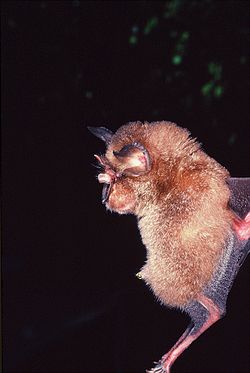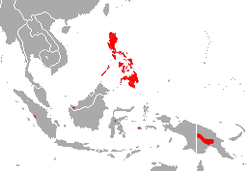| Arcuate horseshoe bat | |
|---|---|
 | |
| Scientific classification | |
| Kingdom: | Animalia |
| Phylum: | Chordata |
| Class: | Mammalia |
| Order: | Chiroptera |
| Family: | Rhinolophidae |
| Genus: | Rhinolophus |
| Species: | R. arcuatus |
| Binomial name | |
| Rhinolophus arcuatus Peters, 1871 | |
 | |
| Arcuate horseshoe bat range | |
The arcuate horseshoe bat (Rhinolophus arcuatus) is a species of bat in the family Rhinolophidae. It is found in Indonesia, Malaysia, Papua New Guinea, and the Philippines.
